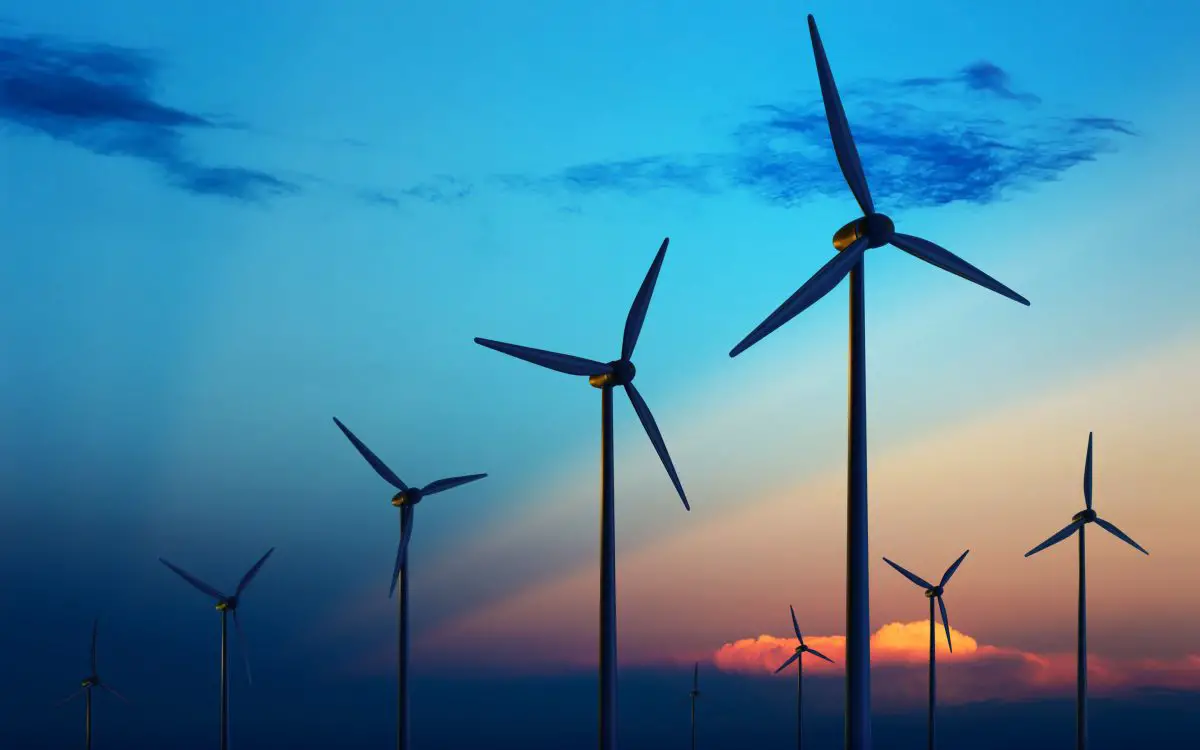Wind power is coming of age in Africa and is fast becoming competitive with solar energy and other traditional energy sources. The African Wind Energy Community has always aimed for the same goal: making wind power a better choice for power generation, increasing power output and driving down the cost of electricity through wind energy.
Like any other piece of equipment in the power industry, wind turbines represent a large investment for the companies that rely on them to generate both electricity and revenue, they present some unique parameters that must be observed so as to increase their efficiency and ensure maximum power generation output.
A wind turbine obtains its power input by converting the force of the wind into a torque (turning force) acting on the rotor blades. The amount of energy which the wind transfers to the rotor depends on the density of the air, the rotor area, and the wind speed and height of the tower.
Wind speed and consistency
Higher wind speeds generate more power because they allow the blades to rotate faster. This rotation translates to more mechanical power and more electrical power from the generator. Mr. Leon Gouws the sales manager at Eveready one of the leading wind turbine manufacturers in Africa, notes that wind speed largely determines the amount of electricity generated by a turbine.
“Location of the installation is very important and should have average wind speeds, wind maps are used to determine if the location is suitable,” said Mr. Leon Gouws.
Since different regions have different wind speeds, study of any proposed site is done extensively to ensure good returns on investment. Typically wind speeds are measured for a year at the site before any decision is taken.
You can gather the available wind dynamics data and using a model like Webull Distribution you can calculate how effective the wind of a particular region is going to be.
Height of tower and installation
Wind speed depends on height of the turbine from the ground. At ground level, there are many obstructions in the form of buildings, houses, trees, etc. which impede the flow of wind and hence decrease its speed.
According to Eveready, wind turbines need to be installed in a position on site where they are clear from obstructions to allow a clean wind flow, and further insists on the significance of height of the tower in ensuring maximum power output.
“Usually by increasing the height of the by 6 meters will increase the wind average speed by 0.5 m/s. So the output of a wind turbine on a 24 m high tower will be considerably more that on a 12 meter tower.”
Doubling the height of tower almost doubles wind power output. Additionally, places of higher altitudes have more wind due to various atmospheric factors.
Density of air
Wind power is directly proportional to air density. The power output of turbines is related to the local air density, which is a function of altitude, pressure, and temperature. Dense air exerts more pressure on the rotors, which results in higher power output
Air density is maximum at sea level. That is the reason why we have so many wind farms near or in seas or oceans .At higher altitude, air density decreases significantly, so wind farms cannot be made in the mountains.
According to Mason Qin, Head of Sales at Goldwind Africa (pty) Ltd, the power output generated by a wind turbine is significantly determined by the density of air. Rotor diameter is a large deciding factor on the power generated by wind turbines. Goldwind is a top wind turbine manufacturer offering comprehensive turnkey services, which include project development, project management and after sale services.
Also Read:7 major specs that influence a modern wind turbine cost
Rotor diameter
Wind power output has a direct relationship with the area swept by the rotor. Since area is proportional to diameter squared, this means that doubling the rotor diameter will quadruple the energy output.
When all other factors have been taken into consideration. A bigger rotor certainly generates more power. Although it may cost more, in the long run, whenever you are getting a wind turbine erected, go for a big a rotor as possible.
One of the deciding forces so far for increasing capacity factors has been an increase in the size of the rotors used on wind turbines.
Turbine rotors are affected by two different forces: torque, which turns the rotors and creates energy, and thrust, which pushes against the turbine. Dealing with thrust can be difficult when designing a rotor.
Trends and technological breakthroughs
While the potential for wind power is a jaw-dropping 10 times our total current power consumption, the total output in Africa is still below average.
To overcome this challenge, advancing technologies have been applied in wind power production. As a result wind power output capacity has increased – and accompanying that, the turbines have become more powerful, more efficient and more affordable for power producer.
“There are constant changes in blade designs in order to improve the start up speed of a wind turbine so that it will supply energy at the lowest possible wind speed average,” added Mr. Leon.
The general consensus is to build taller towers with longer blades that can take better advantage of the high wind speeds that occur at altitude;
But manufacturing challenges—more materials and higher costs—and the use of blade materials that are unable to withstand high stresses make for additional complexities that could seemingly hold back a ramp-up in this valuable industry.

